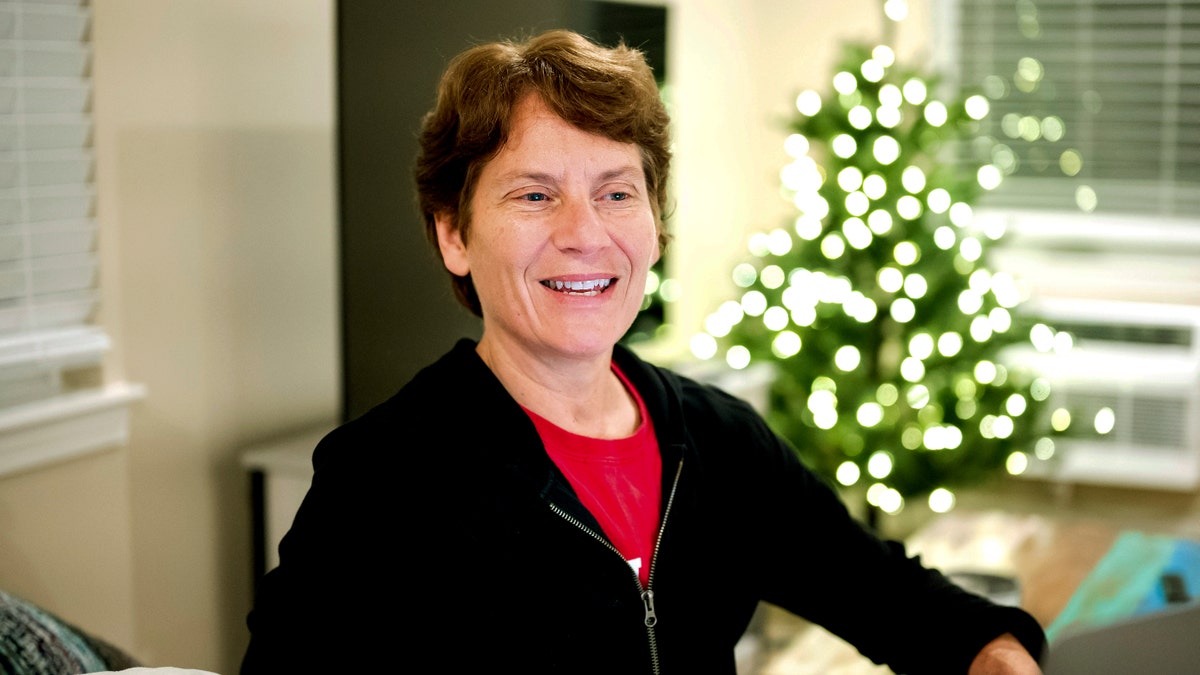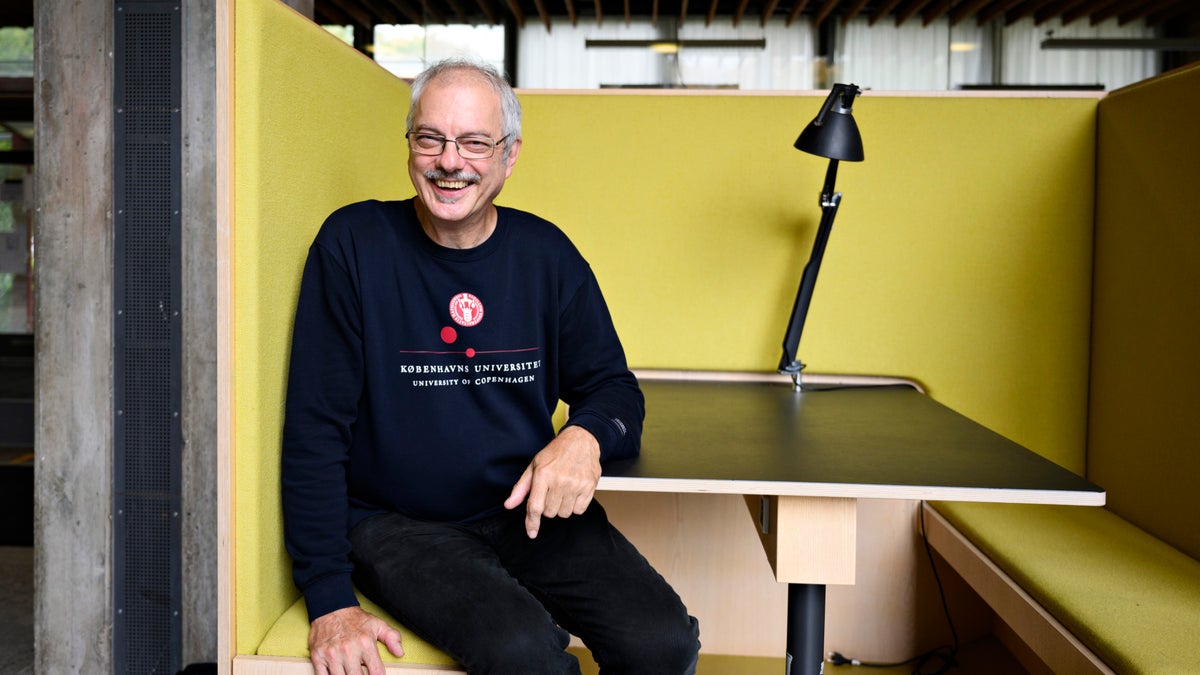NYU chemistry professor fired following complaints by students
Fox News contributor Mollie Hemingway reacts to an NYU professor being fired after students argued that his class was unfairly difficulty on 'America Reports.'
Three scientists were jointly awarded this year's Nobel Prize in chemistry on Wednesday for developing a way of "snapping molecules together" that can be used to explore cells, map DNA and design drugs that can target diseases such as cancer more precisely.
Americans Carolyn R. Bertozzi and K. Barry Sharpless, and Danish scientist Morten Meldal were cited for their work on click chemistry and bioorthogonal reactions.
"It’s all about snapping molecules together," said Johan Aqvist, a member of the Royal Swedish Academy of Sciences that announced the winners at the Karolinska Institute in Stockholm.
Sharpless, 81, who previously won a Nobel Prize in 2001 and is now the fifth person to receive the award twice, first proposed the idea of connecting molecules using chemical "buckles" around the turn of the millennium, Aqvist said.
"The problem was to find good chemical buckles," he said. "They have to react with each other easily and specifically."

The winners of the 2022 Nobel Prize in Chemistry - Caroline R. Bertozzi of the United States, Morten Meldal of Denmark and K. Barry Sharpless of the United States - are announced during a press conference at the Royal Swedish Academy of Sciences in Stockholm, Sweden, Wednesday, Oct. 5, 2022. (Christine Olsson /TT News Agency via AP)
Meldal, 68, based at the University of Copenhagen and Sharpless, who is affiliated with Scripps Research in California, independently found the first such candidates that would easily snap together with each other but not with other molecules, leading to applications in the manufacture of medicines and polymers.
Bertozzi, 55, who is based at Stanford University "took click chemistry to a new level," the Nobel panel said, by finding a way to make the process work inside living organisms without disrupting them.
The goal is "doing chemistry inside human patients to make sure that drugs go to the right place and stay away from the wrong place," she said, speaking by phone at a news conference following the announcement.
NOBEL PRIZE GOES TO 3 PHYSICISTS FOR WORK ON QUANTUM SCIENCE
The award was a shock, she said. "I’m still not entirely positive that it’s real, but it’s getting realer by the minute."
Later, speaking to The Associated Press by Zoom, Bertozzi said one of the first people she called after being wakened by the call around 2 a.m. was her father, William Bertozzi, a retired physicist and night owl, who was still awake watching TV.
"Dad, turn down the TV, I have something to tell you," she said she told him. After she assured him nothing was wrong, he guessed the news. "You won it, didn't you?"

Stanford Professor Carolyn Bertozzi fields congratulatory emails shortly after learning she was awarded the Nobel Prize in chemistry on Wednesday, Oct. 5, 2022, in Palo Alto, Calif. (AP Photo/Noah Berger)
One of three daughters, Bertozzi said she was "fortunate because I grew up with parents that were very supportive, evangelical almost, about having their girls participate in the sciences."
Bertozzi, who is paid by the Howard Hughes Medical Institute, which also supports The Associated Press’ Health and Science Department, said she was grateful for the energy and enthusiasm that a Nobel Prize win will inject into the field.
Meldal said he received the call from the Nobel panel about half an hour before the public announcement. "They ... told me not to tell anyone," he told the AP, adding that he just sat in his office, shaking a bit. "This is a huge honor."
Meldal started out as an engineer, "but I wanted to understand the world so I thought chemistry would give me the solutions."
Jon Lorsch, director of the U.S. National Institute of General Medical Sciences, which supports the work of Bertozzi and Sharpless, described click chemistry and bioorthagonal chemistry as "sort of like molecular Lego — you have a group on one molecule that specifically attaches to a group on another molecule," like Lego clicking together.

K. Barry Sharpless points to a sample used in his work, as he stands on the balcony outside of his home office in La Jolla, Calif. on Oct. 10, 2001. (AP Photo/Denis Poroy)
"That makes it possible to attach molecules in very specific pre-defined ways," he said, and gives scientists a very precise tool to build complex new molecules that can be used for drugs, synthetic materials and other uses.
However, the first iteration of click chemistry could not be used with living cells. "The original click chemistry used copper as a catalyst to join molecules," Lorsch said. "But the trouble is that copper is toxic to most living systems at higher concentrations."
Bertozzi then devised a way to jumpstart the reactions without copper or other toxic solvents — broadening the applications of the molecular Lego to human and animal tissues.
"Being able to work without dangerous solvents, opened many news doors — it enabled scientists to work on new types of reactions that actually take place within the human body," said Angela Wilson, president of the American Chemical Society.
For example, that has allowed scientists to attach dyes to cancer cells to track their movements and analyze how they differ from healthy tissue.
Wilson believes that the advances of this year's Nobel laureates "will allow more individualized medicine in the future because we can really track things much better within the human body."
M.G. Finn, a chemist now at Georgia Tech who collaborated with Sharpless on his Nobel-winning work, said click chemistry’s use in biology and drug development was still "at its infancy," with more exciting discoveries to come.

Nobel Prize in Chemistry winner Morten Meldal smiles at the University of Copenhagen, Denmark, Wednesday Oct. 5, 2022. (Philip Davali/Ritzau Scanpix via AP)
Meldal agreed.
Winning the Nobel is "very much an opportunity ... when you get this kind of award to argue for our young people to take chemistry as a discipline at the university," he said at a news conference in Copenhagen. "Chemistry is the solution to many of our challenges."
Last year the prize was awarded to scientists Benjamin List and David W.C. MacMillan for finding an ingenious and environmentally cleaner way to build molecules that the Nobel panel said is "already benefiting humankind greatly."
A week of Nobel Prize announcements kicked off Monday with Swedish scientist Svante Paabo receiving the award in medicine for unlocking secrets of Neanderthal DNA that provided key insights into our immune system.
Three scientists won the prize in physics Tuesday. Frenchman Alain Aspect, American John F. Clauser and Austrian Anton Zeilinger had shown that tiny particles can retain a connection with each other even when separated, a phenomenon known as quantum entanglement, that can be used for specialized computing and to encrypt information.
CLICK HERE TO GET THE FOX NEWS APP
The awards continue with literature on Thursday. The 2022 Nobel Peace Prize will be announced Friday and the economics award on Monday.
The prizes carry a cash award of 10 million Swedish kronor (nearly $900,000) and will be handed out on Dec. 10. The money comes from a bequest left by the prize’s creator, Swedish inventor Alfred Nobel, in 1895.
